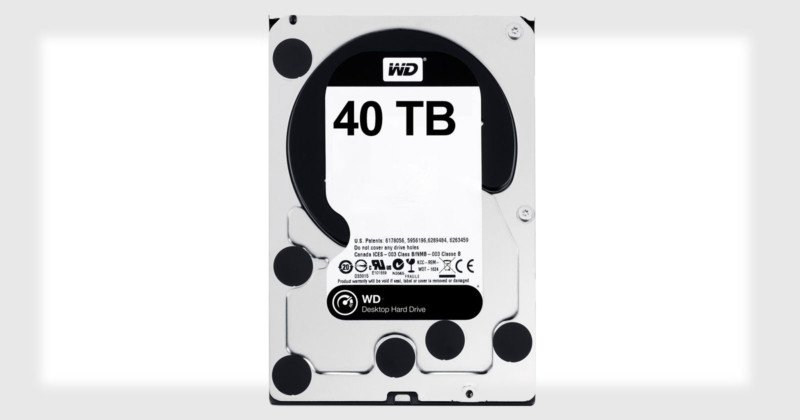New technology Western Digital allows you to create HDD with a capacity of 40 TB and more

Western Digital (WD) about a week ago introduced a new hard disk with a capacity of 14 TB. This is a model HGST Ultrastar Hs14. It is impossible to call it a breakthrough, but it is quite a significant achievement. But now it has become known about the real breakthrough of the new technology of the company, which allows recording information on HDDs of more than 40 TB.
This was made possible through the use of promising recording technologies such as thermomagnetic (HAMR) and microwave (MAMR) recording. The principle that underlies both technologies is similar. They differ only in that in the first case it is necessary to use a laser for heating the surface of the plate, and in the second case - microwave radiation. Both in the first and in the second case it allows changing the magnetic parameters of the HDD plate.
As for the laser, there are certain problems with it. The main thing is the fragility of the head, here the life of the head is by as much as 3-4 orders less than what is required to be able to use a hard disk. This, of course, is not very good - the technology is still promising. But you should not be discouraged, because WD has declared its readiness for the commercial use of the MAMR recording technology.
')

According to the company's specialists, they managed to solve the main problems that faced the developers. The company promises to release hard drives of 40 TB or more by 2025. The beginning of the creation of a technological line for the production of such disks is planned for 2019. In general, the fact that the WD specialists managed to achieve the desired was not surprising - the work on this technology has been underway for almost 10 years.
The company already has everything you need to start. For example, it is WD that is capable of producing miniature Damascene heads. With regard to the generation of microwave radiation, it uses a spin moment generator (spin-torque oscillator, STO). The company uses a multilayer semiconductor material, which uses the effects of spin electronics.

This is not a novelty - similar structures are used in magnetoresistive memory. The generator itself is much smaller than what is offered in the case of the laser variant - here we have to deal with both the laser and the so-called plasmon antenna. Plus, when using microwave radiation, there is no heating, which inevitably occurs when the laser is operating. The combination of all these factors leads to a recording density of 4 Tbit per square inch or even higher density.
The above technology has been called a breakthrough, and this is indeed the case, since microwave radiation makes it possible to go beyond the purely technological limit using conventional means of interaction with a magnetic plate. Due to the fact that the technology is based on already known and used elements, its implementation will not be too expensive, which will have a positive impact on the final price of the product - that is, hard drives. Of course, the first discs of this type will not be cheap, but over time their cost will decrease.
According to WD, first of all the technology is designed for the manufacture of hard drives for data centers. Vice President of Western Digital's research division, John Readning, said in an official statement that MAMR technology will reduce the cost of storing 1 TB of data, which technology companies really need.
As for the performance of such drives, it is lower than the performance of SSD. However, since they reduce the cost of storing 1 TB of data, the new HDDs are beneficial for data centers and cloud storages, where huge amounts of data are being worked on. It is possible that after some time such disks will get into user equipment, including NAS, video surveillance systems and external desktop storages. In this case, ordinary users will be able to store huge amounts of information, including video content in the 8K HDR format.
By the way, some time ago, WD tried to acquire Toshiba's semiconductor business. The deal fell in favor of another buyer - a consortium led by Bain Capital. Now Toshiba and Wester Digital are trying to negotiate a joint investment in a new chip production line.
Source: https://habr.com/ru/post/373899/
All Articles